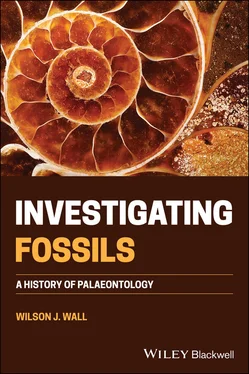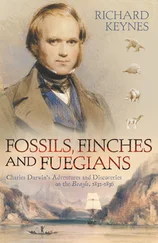Interestingly there is a single species of living gastropod, which is the only animal known to use an iron‐based mineral for its shell. Chrysomallon squamiferum is a gastropod from deep sea thermal vents at depths of 2500 m and greater, where the outer shell contains iron sulphides including the mineral greigite, Fe 3S 4.
While there is a general procedure of one mineral replacing another, or sediment developing in a systematic way over the top of a form which will become fossilised, this is, perhaps, an oversimplification of a dynamic process. It has been shown that the linear progression model may not be so common as a simultaneous process, depending upon tissue type. It is quite likely that local chemistry within the cadaver will alter ion concentrations and influence specific precipitation events. These chemical changes will also be influenced by the state of decay, and it has been suggested that rapid biodegradation can enhance the detail which is eventually left behind (Jauvion et al. 2020). The rapid deposition of some preservative minerals will then be replaced at a slower pace by more robust minerals such as calcite.
As can be appreciated, the formation of fossilised material is a rare chance event which unless interpreted carefully gives a distorted snapshot view of the past. The image which can emerge is one where ecosystems were dominated by the hard shelled or skeletoned. This may broadly be correct, but with the difficulty that soft parts do not generally leave a trace before decay, we may never know the extent or range of some of the species and whole taxons which were on the planet before vertebrates appeared.
1 Bills, C.E. (1926). Fat solvents. Journal of Biological Chemistry 67: 279–285.
2 Chrichton, M. (1990). Jurassic Park. USA: Alfred A. Knopf.
3 Donnovan, S.K. (1991). The Process of Fossilisation. Columbia University Press.
4 Efremov, I.A. (1940). Taphonomy: a new branch of palaeontology. American Geology 74: 81–93.
5 Jauvion, C., Bernard, S., Gueriau, P. et al. (2020). Exceptional preservation requires fast biodegradation: thylacocephalan specimens from Voulte‐sur‐Rhone (Callovian, Jurassic, France). Palaeontology 63 (3): 395–413.
6 Kragh, H. (2008). From geochemistry to cosmochemistry: the origin of a scientific discipline, 1915–1955. In: Chemical Sciences in the 20th Century: Bridging Boundaries (ed. C. Reinhardt). Wiley.
7 Lyell, C. (1832). Principles of Geology, vol. II. London: John Murray.
8 Saitta, E., Kaye, T., and Vinther, J. (2019). Sediment‐encased maturation: a novel method for simulating diagenesis in organic fossil preservation. Palaeontology 62 (1): 135–150.
9 Smith, E.F. (2019). Pyritization of soft tissue at the Precambrian‐Cambrian boundary in the southwest USA. The Palaeontological Association Newsletter 102: 65–67.
Конец ознакомительного фрагмента.
Текст предоставлен ООО «ЛитРес».
Прочитайте эту книгу целиком, купив полную легальную версию на ЛитРес.
Безопасно оплатить книгу можно банковской картой Visa, MasterCard, Maestro, со счета мобильного телефона, с платежного терминала, в салоне МТС или Связной, через PayPal, WebMoney, Яндекс.Деньги, QIWI Кошелек, бонусными картами или другим удобным Вам способом.












